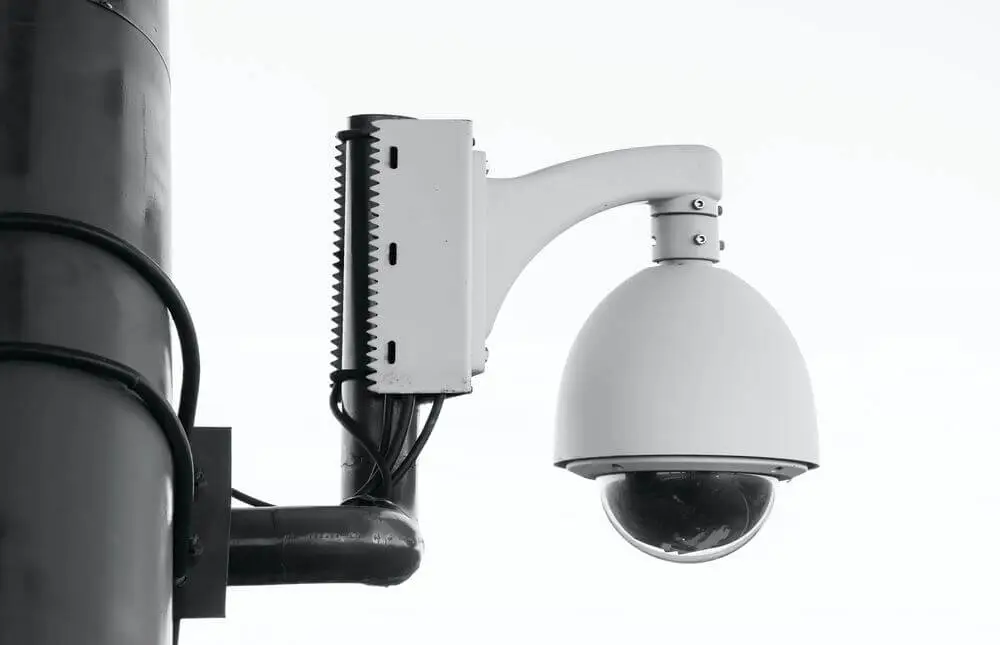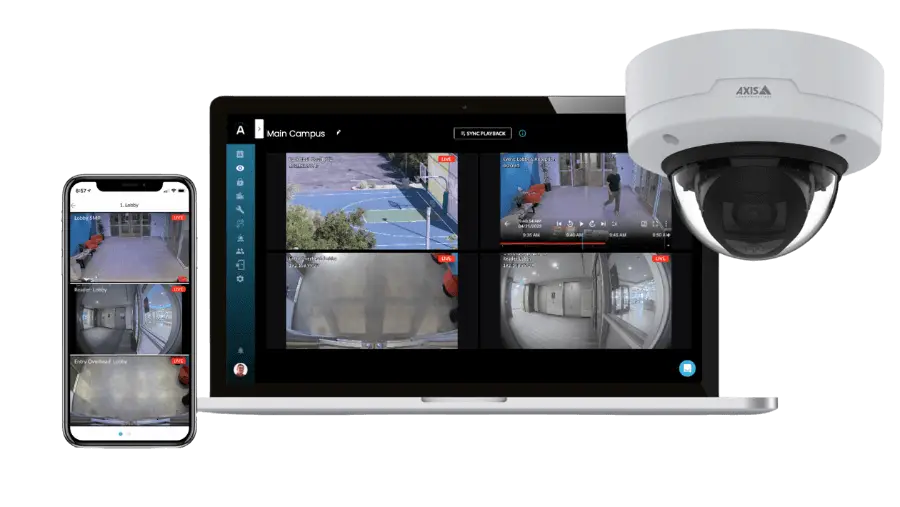Security camera systems safeguard our homes and businesses day in and day out. These vigilant electronic eyes serve as a deterrent to potential threats, provide crucial evidence in the event of an incident, and offer peace of mind to property owners. However, one persistent challenge that plagues security camera systems is the loss of video footage. What causes video loss in security cameras? What practical solutions will ensure the continuous functionality of your security cameras and help ensure the continued safety of your home or business?
Common Causes of Video Loss and How to Fix Them
Power-related Issues: Ensuring a Continuous Power Supply
Power-related issues are among the primary culprits behind video loss in a security camera system. Whether it’s a sudden power outage, faulty power cables, or an inadequate power supply, addressing these concerns is vital.
Power Outage: Installing an uninterruptible power supply (UPS) is a proactive measure to combat power outages. A UPS ensures a continuous power source during outages, allowing your security cameras to operate seamlessly. A surge protector can also protect against damage to hardware during an outage. To recover data after a power outage, follow these steps:
Powering Down: Once power is restored, restart the system and check for any errors. If needed, consult the surveillance camera’s manual for specific recovery procedures.
Faulty Power Cables: Regularly inspect power cables for signs of wear, fraying, or damage. Replace any compromised cables immediately to prevent video loss.
Inadequate Power Supply: Verify that the power supply matches the camera’s requirements. If necessary, upgrade to a power supply that meets the camera’s specifications.
Camera Hardware Problems: Ensuring Optimal Functionality
Camera hardware issues, such as physical damage or lens obstruction, can lead to video loss. Addressing these problems promptly is crucial for maintaining the integrity of your surveillance system.
Camera Damage or Malfunction: Regularly inspect cameras for physical damage. If damage is detected, promptly replace or repair the affected analog or IP camera.
Lens Obstruction: Keep camera lenses clean and free from dirt, dust, or obstructions. Regular maintenance prevents video loss caused by obscured lenses.
Overheating: Enhance ventilation around cameras and opt for models rated for outdoor use if they are exposed to harsh environmental conditions.

Cable and Connection Issues: Ensuring a Solid Connection
Issues related to cables and connections, such as loose cables or signal interference, can disrupt the flow of video footage.
Loose or Damaged Cables: Secure and weatherproof cable connections to prevent video loss. Replace damaged cables promptly to maintain a reliable connection.
Poorly Terminated Connectors: Ensure connectors are properly terminated, and use high-quality connectors to avoid signal loss.
Signal Interference: Identify sources of interference, such as electronic devices, and relocate or shield cables accordingly.
Network and Connectivity Problems: Seamless Integration
Network and connectivity issues, including network congestion and IP conflicts, can impact the video signal stability of your wireless security camera system.
Network Congestion: Prioritize camera traffic on your network or consider upgrading your network to alleviate congestion.
IP Address Conflicts: Assign static IP addresses to cameras to prevent conflicts on your network.
Internet Service Disruptions: Regularly check the signal strength of your internet connection, and consider a backup connection for critical cameras.
Software and Firmware Glitches: Staying Up-to-Date
Outdated software and firmware can introduce glitches, leading to video loss. Regular updates and proper configuration are essential to avoid these issues.
Keep Firmware Up to Date: Check for firmware updates from the camera manufacturer regularly and apply them promptly.
Check for Software Updates and Patches: Update the camera’s software or app to the latest version to ensure optimal performance.
Reconfigure Settings as Needed: Review camera settings periodically and make adjustments according to your requirements.
Arcules: A Cloud-based Solution to Video Loss in Security Cameras

While the discussed preventative measures and quick fixes are crucial, they are often akin to band-aids. For a comprehensive solution to video loss, consider embracing cloud Video Management Systems (VMS). Specifically, Arcules’ cloud VMS stands out as a powerful and efficient solution.
What is Arcules Cloud VMS?
Arcules Cloud VMS is a cutting-edge solution that leverages cloud technology to provide seamless video management for your security system. Whether you’re utilizing a CCTV system or wireless security cameras, our platform can integrate with your infrastructure, including added security measures like an access control system. This eliminates the need for traditional on-premise solutions, offering flexibility, scalability, and enhanced security.
Benefits of Arcules Cloud VMS
Continuous Access: Access your video footage anytime, anywhere, with an internet connection.
Scalability: Easily scale your surveillance system as your needs evolve.
Enhanced Security: Arcules employs advanced encryption and security protocols to safeguard your data.
Reduced Hardware Dependency: Eliminate the need for extensive hardware infrastructure like a network video recorder (NVR) or hard drive.
Additionally, Arcules Cloud VMS directly addresses the common causes of video loss discussed earlier:
Power-related Issues: Arcules ensures continuous access, even during power outages, with redundant power and connectivity options.
Camera Hardware Problems: With Arcules, hardware issues are mitigated as the system operates in the cloud, reducing dependency on physical components.
Cable and Connection Issues: Arcules’ cloud-based architecture minimizes the impact of video cable or ethernet cable connection issues, ensuring reliable video transmission.
Network and Connectivity Problems: Arcules optimizes network usage, reducing congestion and mitigating IP conflicts.
Software and Firmware Glitches: Regular updates are seamlessly managed in the cloud, minimizing the risk of software and firmware glitches.
Proactive Measures for Uninterrupted Security
In conclusion, understanding the common causes of video loss and implementing proactive measures is paramount for maintaining the effectiveness of a security system. Regular maintenance, prompt troubleshooting, and embracing innovative solutions like Arcules Cloud VMS are key steps in ensuring uninterrupted surveillance. Safeguard your security by staying vigilant and integrating advanced technologies to stay one step ahead of potential threats.
If you’re interested in learning more about cloud – based video surveillance systems, please check out our Arcules Cloud Surveillance Solutions.

